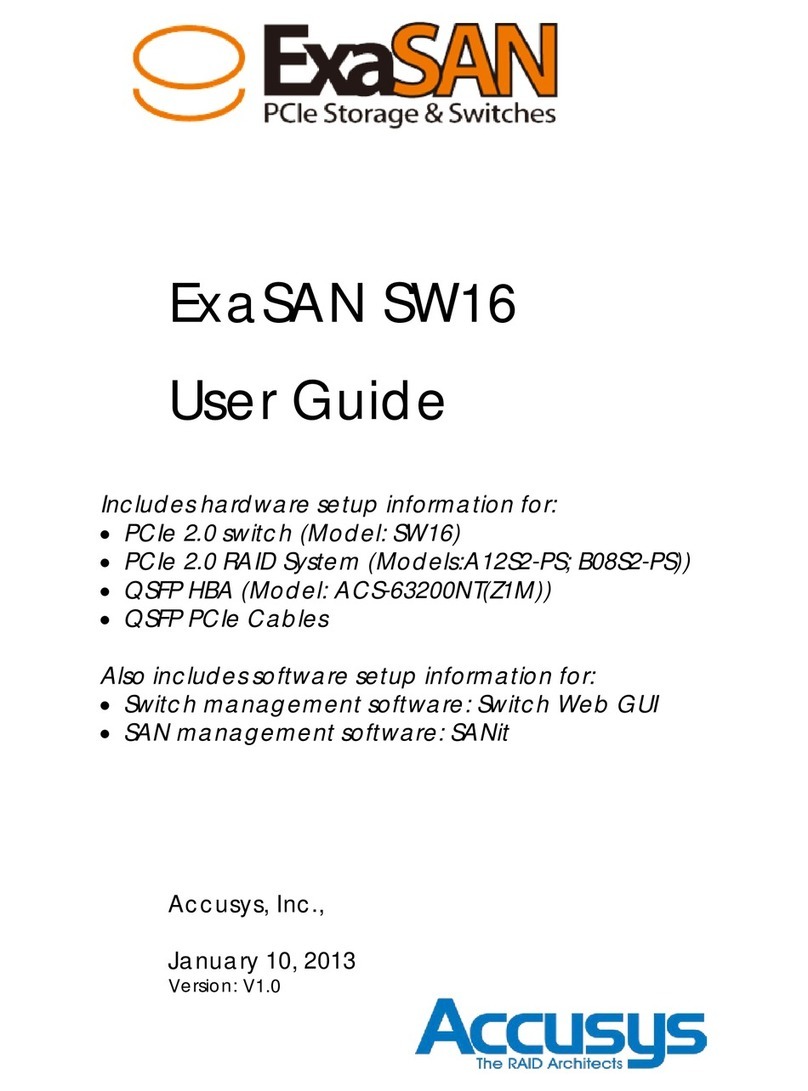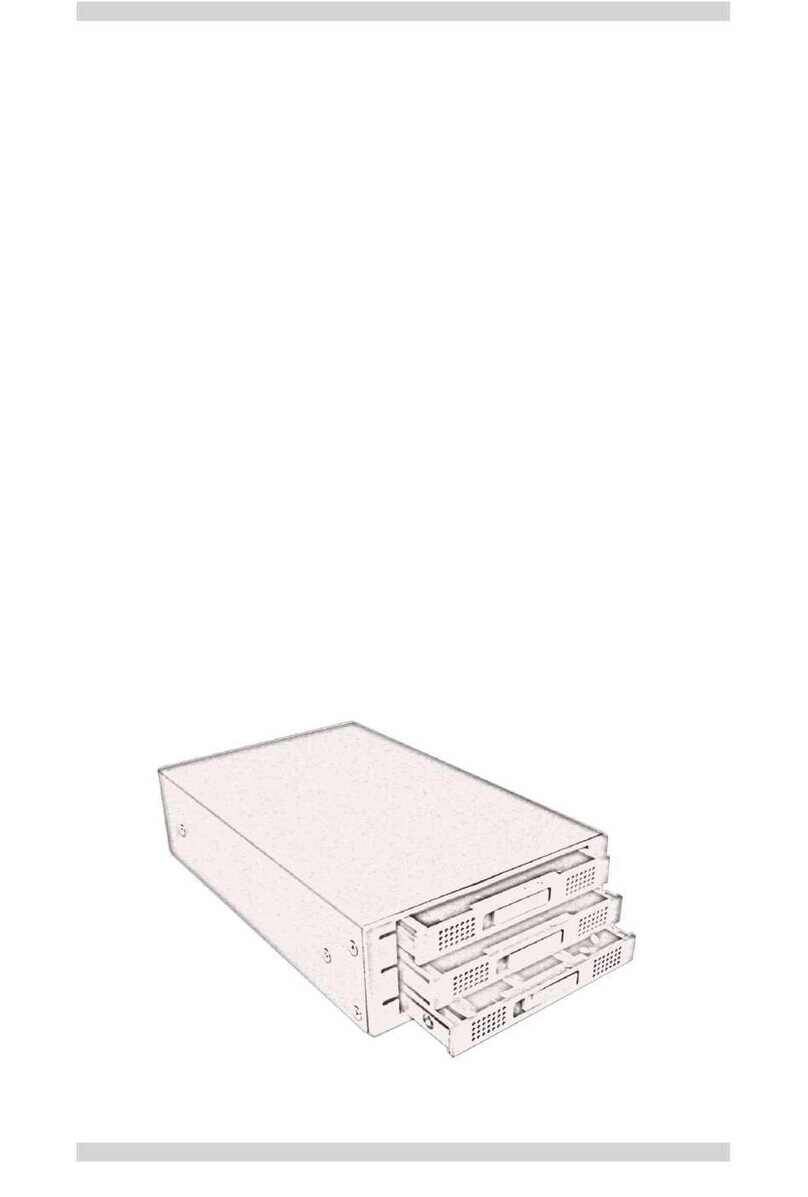
TABLE OF CONTENTS
User Guide Page v
2.5 Security................................................................................................................... 2-2
3. Installing the ExaSAN SWF16......................................................................................... 3-1
3.1 Hardware installation ............................................................................................ 3-1
3.1.1 Installing the HBA Card...........................................................................................................3-1
3.1.2 Connecting SWF16 to the ExaSAN storages.......................................................................3-3
3.1.3 Connecting SWF16 to the Host systems ..............................................................................3-4
3.1.4 Connecting the switch LAN and power cord ...................................................................3-5
3.2 Powering the System On and Off ......................................................................... 3-6
3.2.1 Powering On.............................................................................................................................3-6
3.2.2 Powering Off.............................................................................................................................3-7
3.3 Installing the Installer Package ............................................................................ 3-7
3.3.1 Before You Start .......................................................................................................................3-7
3.3.2 Installing the installer package .............................................................................................3-7
3.3.2.1 Installing on MAC and Windows..................................................................................3-8
3.3.2.2 Installing on Linux ..........................................................................................................3-11
3.3.3 Confirm the ExaSAN RAID system driver on OS ...............................................................3-13
3.3.3.1 Confirming the ExaSAN RAID system driver on Mac .............................................3-13
3.3.3.2 Confirming the ExaSAN RAID system driver in Windows .......................................3-15
3.3.4 Confirm LEDs on HBA ............................................................................................................3-16
4. Using Switch Web GUI & SANit ..................................................................................... 4-1
4.1 ExaSAN switch web GUI........................................................................................ 4-1
4.1.1 Entering ExaSAN switch web GUI .........................................................................................4-1
4.1.2 User name and Password ......................................................................................................4-2
4.1.3 Configuration menu - Overview...........................................................................................4-3
4.2 Creating arrays by SWF16 –“Quick Setup”......................................................... 4-4
4.3 Download Log–“Event Management”................................................................ 4-7
4.4 System Management............................................................................................ 4-9
4.4.1 Configuring the network –“Network” ...............................................................................4-10
4.4.1.1 eth0 –Public port (for management by RJ45) .......................................................4-10
4.4.1.2 eth1 –SAN private port (for heartbeat communication by RJ45)......................4-10
4.4.2 Changing SWF16 time –“Time” ..........................................................................................4-11
4.4.2.1 Static ...............................................................................................................................4-11
4.4.2.2 NTP...................................................................................................................................4-12
4.4.3 Change Password –“Security Control” ............................................................................4-13
4.4.4 Firmware Update...................................................................................................................4-14
4.4.5 Restart / Shutdown................................................................................................................4-16
4.5 Environment status monitoring ........................................................................... 4-18
4.6 SANit FS configuration ......................................................................................... 4-20
4.6.1 Import License ........................................................................................................................4-21
4.6.1.1 Get Official License for more clients.........................................................................4-21
4.6.2 SAN Volume Creation (Quick Wizard)...............................................................................4-25
4.6.3 Delete SAN Volume (Quick Wizard)...................................................................................4-25
4.6.4 Add SAN Client IP on SANit (SWF16 Side)..........................................................................4-27
4.6.5 Add Clients (Client Side) ......................................................................................................4-27
4.6.5.1 Supported Operating Systems and Platforms in Client .........................................4-29
4.6.5.2 Windows Clients............................................................................................................4-30






























